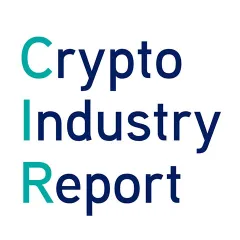Celsius Drama: Crypto lenders in trouble
This week, our blockchain experts assessed the following topics:
- Celsius Drama: Crypto lenders in trouble
- Is a Luna-type scenario about to happen to Ethereum?
- Crypto regulation: The US is trying hard, while the EU is coming close
- Stablecoins: A real crypto use case with a bright future
Our bi-weekly Crypto Industry Report provides you with valuable information on the global crypto industry – picked and analysed by our blockchain experts.
Celsius Drama: Crypto lenders in trouble
Following the publication of yet another 40-year record CPI print of 8.6% in the US on June 10th, the crypto markets corrected heavily. And with prices coming down significantly, the current bear market took its next toll. New York-based crypto lending company Celsius Network saw its own token correct more than 50% in a few hours.
Traders started selling the token substantially after the CeDeFi company announced that it would halt all withdrawals, swaps, and transfers between accounts. These measures were purportedly taken to protect the community’s interest – critics, however, speculated that the company is rather attempting to avert insolvency with such a bail-in.
For weeks already, there had been speculation that Celsius has been sliding into a state of illiquidity with liquid liabilities exceeding its illiquid assets. Not least, the Terra-UST collapse is said to have debilitated the crypto lending company. Market observers were particularly sceptical because the company that was founded in 2017 to lend customer deposits to various DeFi protocols, did not sustainably adjust its yields despite the collapsing yield environment.
Interestingly enough, Nexo, another popular crypto lender took to Twitter to announce that the company has extended a formal offer to acquire qualifying assets of Celsius Network. With confidence in crypto lending activity being severely shattered as a consequence of the recent happening surrounding Celsius, Nexo’s offering might indicate that some players are acting on a more solid foundation.
Nonetheless, the crypto lending industry as a whole will have to reconsider its risk management strategies. Ensuing, more binding regulation for crypto lenders will surely play its part as well. First off however, crypto lending companies like BlockFi are already cutting staff because of the current macroeconomic situation. Also, the prominent crypto exchange Crypto.com indicated that they are forced to lay off 260 employees, which is about 5% of their corporate workforce.
Is a Luna-type scenario about to happen to Ethereum?
In the aftermath of the collapse of UST and Luna, crypto investors have recently become rather sensitive to market risks resulting from the de-pegging assets. This sort of fear has also taken hold within the Ethereum community during the last few days. The cause for concern is the price of stETH, a crypto derivative. Its price has de-pegged about 6% from ETH, Ethereum’s native blockchain asset.
But what is stETH in the first place and why does it exist? The derivative token represents staked ether that is locked inside the popular liquid staking protocol Lido. Following the Beacon Chain launch in December 2020 as part of Ethereum’s wider scalability efforts, the Lido protocol was started as an option to give ether holders a way to gain exposure to the Beacon Chain’s staking yields, while simultaneously staying liquid through the stETH derivative. StETH tokens are created when ether is deposited and burned upon redemption.
Historically, this ether derivative has been a safe asset, effectively holding a one-to-one peg with ETH. The current macro backdrop though combined with delays on Ethereum’s merge has led crypto investors to adopt a bearish outlook on ether – at least in the short-term. Hence, slacking demand for ether also decreased the demand to borrow against stETH.
Were the stETH price to fall further, a liquidation cascade could potentially set in, dragging prices to new lows. An increased de-pegging does not represent an existential risk for Ethereum though as stETH does not need to maintain a tight correlation to the ETH price. This is because stETH is fully backed by ETH on the Beacon chain and its price is ultimately a function of the appetite for ETH staking yields, Lido smart contract risk and the probability of the merge happening, making it possible for stETH getting unlocked sometime after the PoS launch for Ethereum. And yes, this probability has increased in the last few days, since Ethereum has successfully completed the merge update on its main test network called Ropsten.
Crypto regulation: The US is trying hard, while the EU is coming close
With crypto falling and popular projects imploding, the topic of regulation seems more pressing than ever before. Hence, fresh attempts are made to properly regulate the field of cryptocurrencies. In the US, a bipartisan digital asset bill has just been proposed, which is dubbed as a big step forwards. By laying out a broad framework for regulating the crypto industry, the proposal encompasses things like tax guidance for crypto assets and stricter requirements for stablecoin issuers.
An important proposition is to have DAOs – decentralised autonomous organisations – be classified as formal business entities, either a limited liability company (LLC) or a partnership. Consequently, this would also mean that DAOs would be taxed just like regular corporations. However, the implications of this are not entirely clear yet and could lead to DAOs needing special sub-classifications given the fact they might function differently than regular companies when it comes to operating and remunerating members.
The bill has also stirred up critics, not least because it aims to define most cryptocurrencies as commodities and not securities. As such, they would be overseen by the Commodity Futures Trading Commission (CFTC) and not the much bigger Securities and Exchange Commission (SEC). While this might make sense for Bitcoin and Ether, the crypto world’s biggest, most decentralised assets, other more centralised projects might not necessarily fit the commodity category, some detractors point out.
Issues like the above will have US regulators grapple with crypto regulation for some time. All the while, the European Union seems to be headed for an agreement on key legislation regarding cryptocurrencies. According to people familiar with the matter, key actors in the EU are about to resolve some key questions that have been holding up the markets in crypto assets (MiCA) framework. Once remaining disagreements around the inclusion of non-fungible tokens (NFTs), and the regulation of stablecoins are cleared, the way will be clear to adopt unified rules for digital assets in Europe.
Stablecoins: A real crypto use case with a bright future
Stablecoins remain at the top of everybody’s mind: Regulators, investors and businesses. While they present a real use case for crypto, people have also started pondering their risks in the wake of the UST collapse. Ultimately, the biggest risk a stablecoin faces is severe volatility, resulting in a complete de-pegging from the corresponding value it is supposed to track. Therefore, the most important question to ask is: How does a stablecoin intent on holding its peg? Obviously, internal details matter greatly and need to be researched, communicated and understood broadly.
This is ever more important, as stablecoin adoption is relentlessly marching on. Especially in today’s rising interest rate environment, global businesses spanning multiple jurisdictions are increasingly looking to stablecoins as a way to benefit from instant, cost-efficient settlement for business-to-business payments.
As a matter of fact, today’s legacy infrastructure has morphed into a sluggish behemoth. For international transactions, as many as four intermediaries can be involved. And not only can settlement times last up to five days, but the costs resulting from intermediation and trapped liquidity need to be paid by businesses and their end consumers. That much even the Federal Reserve has acknowledged in a recent report.
Stablecoins do indeed represent the solution for such businesses for whom liquidity and working capital are essential. As institutions, they will push stablecoin adoption to the next level. And regulatory guidance that is underway in many different countries will be supportive and give them even more confidence in their adoption efforts.
Share post

Auch interessant

To be continued: SEC pushes back at Coinbase
SEC pushes back against Coinbase's claim of no regulatory jurisdiction, stating the crypto exchange knowingly violated securities laws. Meanwhile, Gemini, owned by the Winklevoss twins, files a lawsuit against Digital Currency Group and CEO Barry Silbert alleging fraud and deception following the collapse of a lending venture. The Bank for International Settlements survey reveals that 93% of central banks are working on Central Bank Digital Currencies (CBDCs) which are seen as potential geopolitical policy tools and a challenge to the dollar's dominance. The race for a Bitcoin ETF intensifies, with BlackRock refiling its application featuring Coinbase as the market surveillance partner, as the Grayscale Bitcoin Trust's discount to net asset value narrows, potentially indicating the transformation into a proper ETF.

BlackRock fever: The ETF filing spree and institutional appetite
BlackRock filed for a Bitcoin ETF with the SEC, inspiring similar applications from firms like WisdomTree, Invesco, and Fidelity, and boosting Bitcoin's value. Traditional finance institutions such as Fidelity and Nasdaq are showing increased interest in crypto, with moves towards exchange and custody services. The defunct crypto exchange FTX, under new CEO John Ray III, is planning a potential revival after recovering significant assets. Meanwhile, the IMF is developing a global CBDC platform for cross-border transactions and DAI, a major stablecoin, is diversifying its backing from USDC to include real-world assets.

SWIFT explores blockchain interoperability
SWIFT has partnered with Chainlink to experiment with leveraging its infrastructure for transferring tokenized value across blockchain networks. The trials will address interoperability, regulatory challenges, and operational drawbacks for financial institutions in a blockchain environment. Chainlink will provide connectivity between private and public blockchains. SWIFT's findings will be published later this year.

China wants an Internet 3.0, while Hong Kong gears up for crypto trading launch
China is striving for advancement in Internet 3.0 technologies, with Beijing's white paper outlining plans to invest in the development of the metaverse and Web3 tech such as non-fungible tokens, but not cryptocurrencies due to the country's previous ban. Meanwhile, Hong Kong is launching its new crypto trading regulations, allowing retail investors to participate from June 1, 2023, with exchanges like Huobi Hong Kong beginning to offer spot trading to retail and institutional clients. Furthermore, the Cybersecurity and Technology Crime Bureau of the Hong Kong Police Force is launching a metaverse platform, 'CyberDefender', to educate the public about potential threats and crime prevention in the metaverse.

BRC-20: Innovating on Bitcoin is the new cool
A new Bitcoin “token standard” called BRC-20 is the hottest thing right now in the crypto space. It was introduced in March 2023 by a pseudonymous person called Domo. Bitcoin Request for Comment 20 (BRC-20) is an experiment that brings fungible tokens to the Bitcoin blockchain using the Ordinals protocol. Ordinals rely on ordinal theory, enabling the identification and tracking of individual satoshis within Bitcoin's existing supply, while also allowing them to be inscribed (associated) with data. Through this technique, satoshis (sats) are given ordinal numbers starting with zero. Anyone can add a script file to a sat to create and transfer a BRC-20 token on the Bitcoin blockchain. BRC-20 tokens are created using three functions: deploy, mint, and transfer.

US versus EU: Giants fighting for regulatory clarity
It is official now: The European Parliament voted overwhelmingly in favour of Markets in Crypto Assets (MiCA), legislation that will guide the crypto sector in all 27 European Union member states. 517 parliament members voted for it, while 38 voted against it. This approval makes Europe the first continent with comprehensive rules for cryptocurrencies. Also, it means that all EU member states will have unified crypto regulations. So, if a crypto business is approved in one EU member country, it could easily expand operations to another member state. The EU’s milestone was lauded by Binance as well as Kraken and Coinbase.

Ethereum: Another milestone reached with the Shanghai Update
On April 12, 2023, Ethereum successfully executed the planned Shanghai update also known as Shapella. The upgrade allows validators to unstake their staked ETH and withdraw their rewards, as well as staked ether if chosen. Now that another level of uncertainty has waned for the biggest smart contract blockchain, this new feature could attract more investors to stake their ether.

CFTC versus Binance:
Clash of the titans
The world’s leading crypto exchange by volume, Binance, alongside its CEO, Changpeng Zhao, and ex-Chief Compliance Officer, Samuel Lim, are being sued by the US Commodity Futures Trading Commission (CFTC).

Stablecoin USDC briefly lost its
peg. What do we learn from this?
One of the top stablecoins by market cap, USD Coin (USDC), de-pegged briefly from the US dollar on March 11 following the collapse of Silicon Valley Bank (SVB). Circle, the stablecoin’s issuer, held $3.3 billion in USDC reserves with the bank, which caused panic as investors rushed to withdraw their funds, assuming USDC could implode because of insufficient backing. However, the amount represented less than 8% of the stablecoin’s reserves.

Ethereum Shanghai upgrade pushed to April: Will there be too much selling pressure?
Ethereum stakers have been eagerly awaiting the Shanghai upgrade, which will enable them to withdraw their staked ether. Stakers’ funds have been locked since Ethereum introduced the proof-of-stake Beacon Chain in December 2020. The upgrade was originally slated to take place sometime in March but was pushed by about two weeks to April during a recent execution layer meeting.